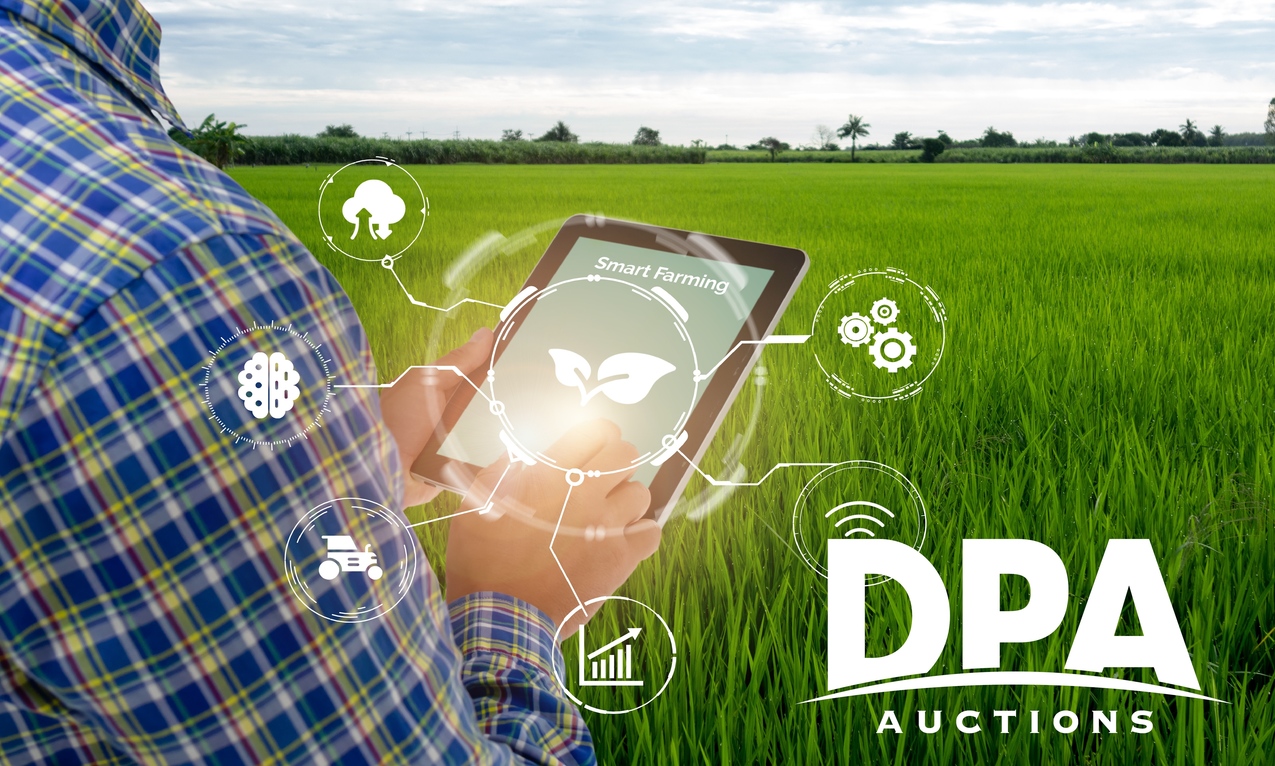Change is often challenging—especially in an industry deeply rooted in tradition.
There once was a time when farmers had to transition from horses to tractors in order to remain successful; but it didn’t happen overnight. John Froelich invented and built the first gasoline/petrol-powered tractor in 1892. It wasn’t until 1945 when tractor power finally overtook the amount of horse power on American farms. That’s fifty-three years!
Today’s technology is forging ahead at lightning speed. Even though it can be intimidating, more and more farmers are incorporating technology into their day-to-day operations and realizing the benefits of technology-enhanced equipment.
Software, Sensors, and Soil Sampling
Research conducted by the Context Network reported that more than 80 percent of farm operators they surveyed are using yield monitors, GPS and soil sampling technologies.
Software tools can provide real-time field scouting and conditions reports. Sensors and soil sampling enable on-the-spot decision-making tied to the bottom line, and a variety of farm information management systems exist that make inputting operational and financial data easy.
Precision Agriculture Technologies
Equipment featuring precision agriculture technologies has greatly increased over the past two decades. A recent study published by the Association of Equipment Manufacturers (AEM) highlighted five key environmental benefits achieved through adopting precision agriculture:
- Yield benefit through increased efficiency
- Fertilizer reduction by more precise placement
- Pesticide reduction by more accurate application
- Fuel savings due to less overlap and better monitoring
- Water savings through more accurate sensing of needs
Tractors
Externally, tractors have looked basically the same for decades, but many of today’s tractors feature advancements in technology that our fore-farmers never imagined possible. Global position systems (GPS) technology facilitates self-driving tractors and combines while other innovative technologies assure that engines run efficiently and in compliance with today’s environmental regulations.
Most of this technology runs on a fixed program (software) that requires input from the operator. But, future tractors will use artificial intelligence (AI) to evaluate the terrain ahead, recognize any changes/obstructions, and automatically adjust/adapt to the current conditions.
Tractors of the future will be data incubators digitally connected to the world through the cloud (servers that are accessed over the Internet, and the software and databases that run on those servers).
Innovations in Harvesting
As the world’s food resources continue to be burdened by population growth and climate change, technology is helping to bridge the gap between rising food demand and scarce agricultural resources. According to the US Department of Agriculture, labor amounts to almost half of the production costs for lettuce and more than a third of the cost for crops such as peaches, tomatoes, and spinach. Innovations in technology reduce the reliance on labor, which helps combat the increased shortage of agricultural workers and lower its sizable share of total costs.
Robots
Various robots are being developed to pick fruit and vegetables. One example is a strawberry-picking robot created by US-based Harvest Croo Robotics (HCR). It is capable of harvesting the same quantity that a team of 30 workers could achieve in a day.
With six picking claws per robot, each harvester has 96 picking claws ready to harvest, as the harvester autonomously navigates its way through acres of strawberries. Their artificial intelligence and machine learning vision system scans each berry on a plant determine if it’s ripe, healthy, and ready to be picked. The harvester is then set to pick a berry without damaging the fruit.
Looking Ahead
As growers become more comfortable adapting to the new products and services at their disposal, operators will become increasingly dependent on autonomous power units and artificial intelligence.
While farm operators are excited by the gains in productivity technology can provide, many are frustrated by the multiple sources of information and the inability of different brands of equipment to interface with one another. Ultimately, operators want a single platform that ties together all aspects of their operation.
Equipment manufacturers are competing with one another to create and implement such a platform and be the first to bring the technology to market.
We Are Here For You
DPA Auctions uses the latest technology to provide a seamless and simple process to buying and selling heavy machinery in the agricultural, construction, and transportation industries. Millions of website visits per month and countless satisfied buyers and sellers attest to our success.
Do you have equipment you are considering selling? From listing your equipment to collecting your check, DPA Auctions has a team of professionals that are here to help you every step of the way.
Contact us:
Email: customer.service@DPAauctions.com
Toll Free: 800-492-9090
Local: 402-721-4388

